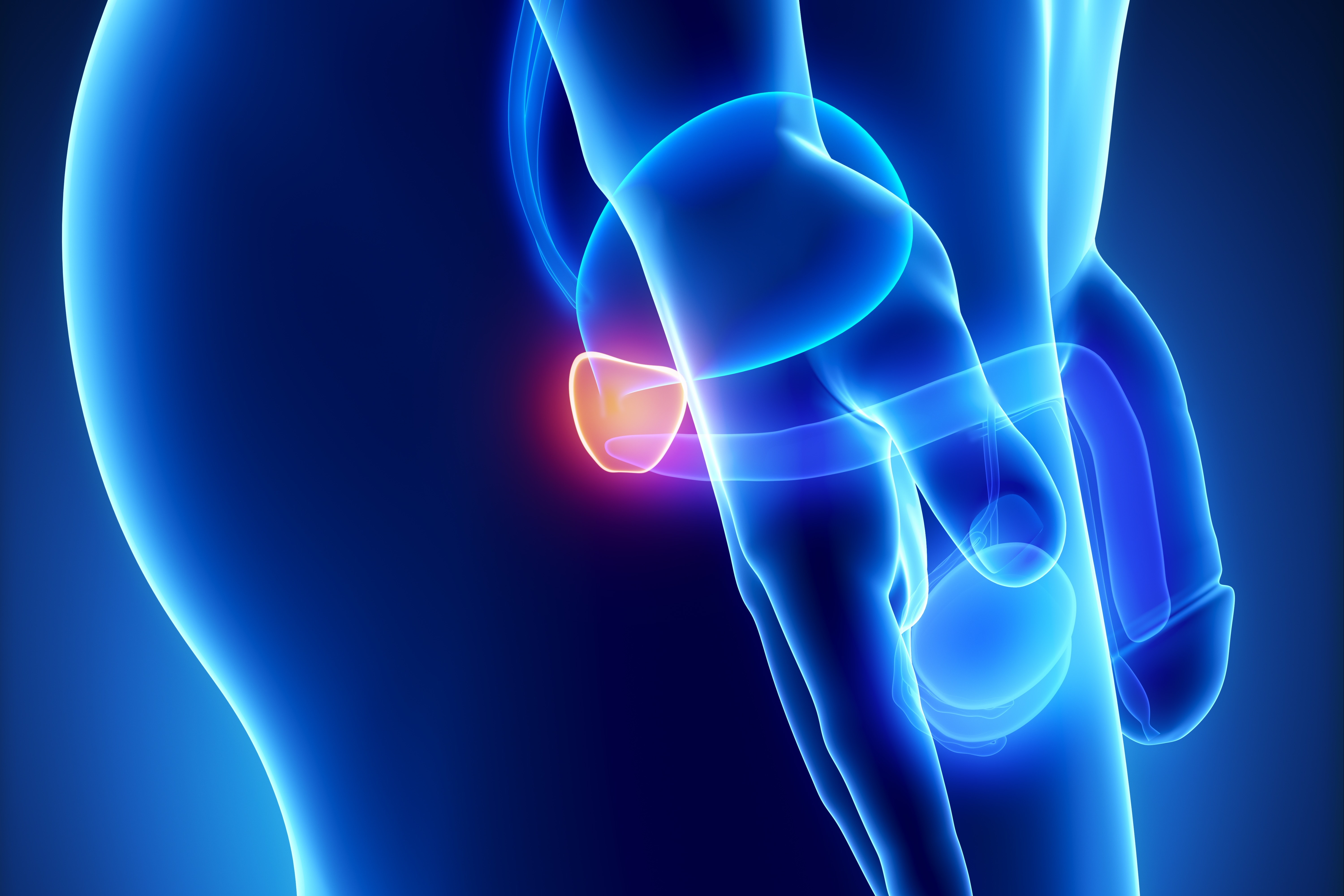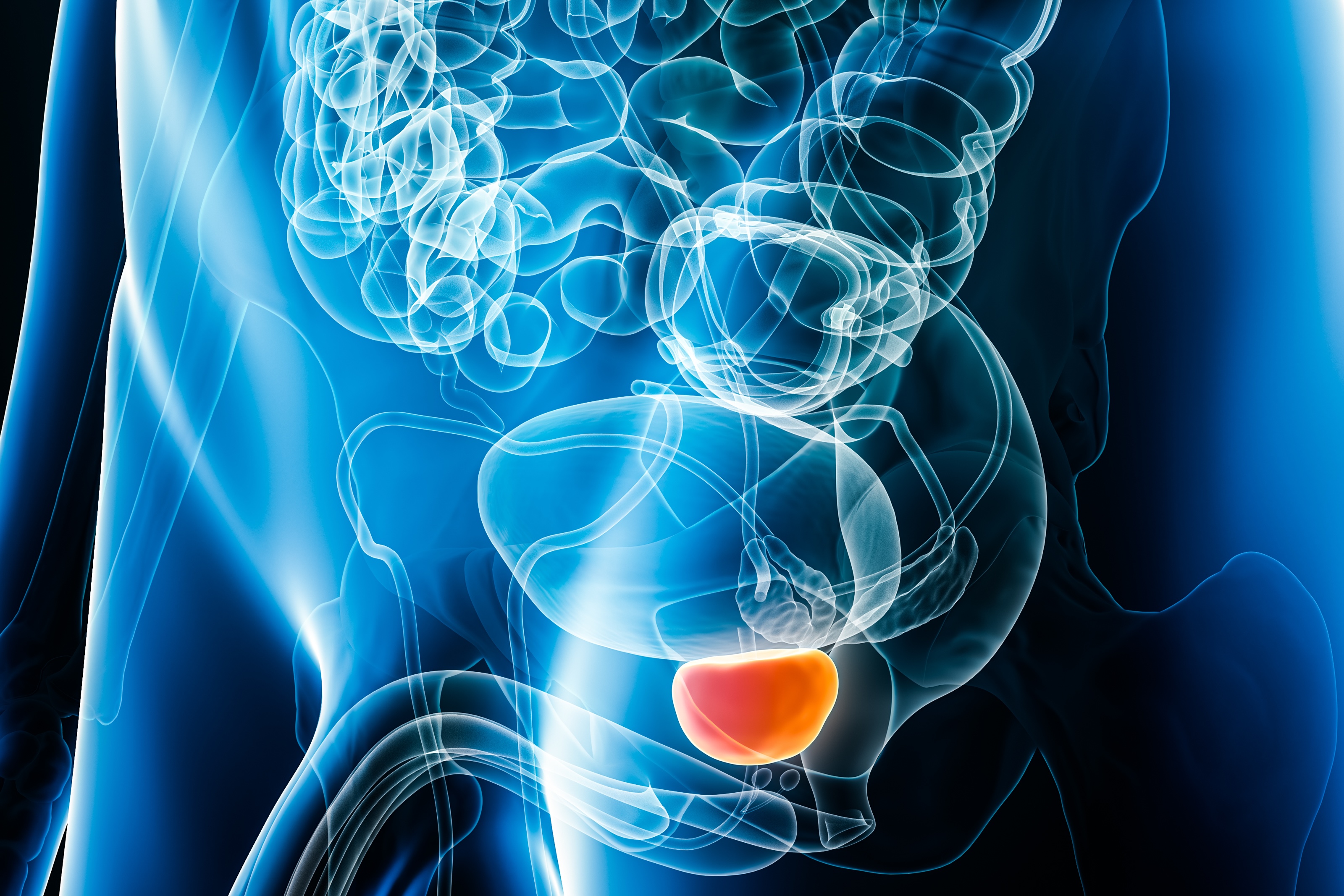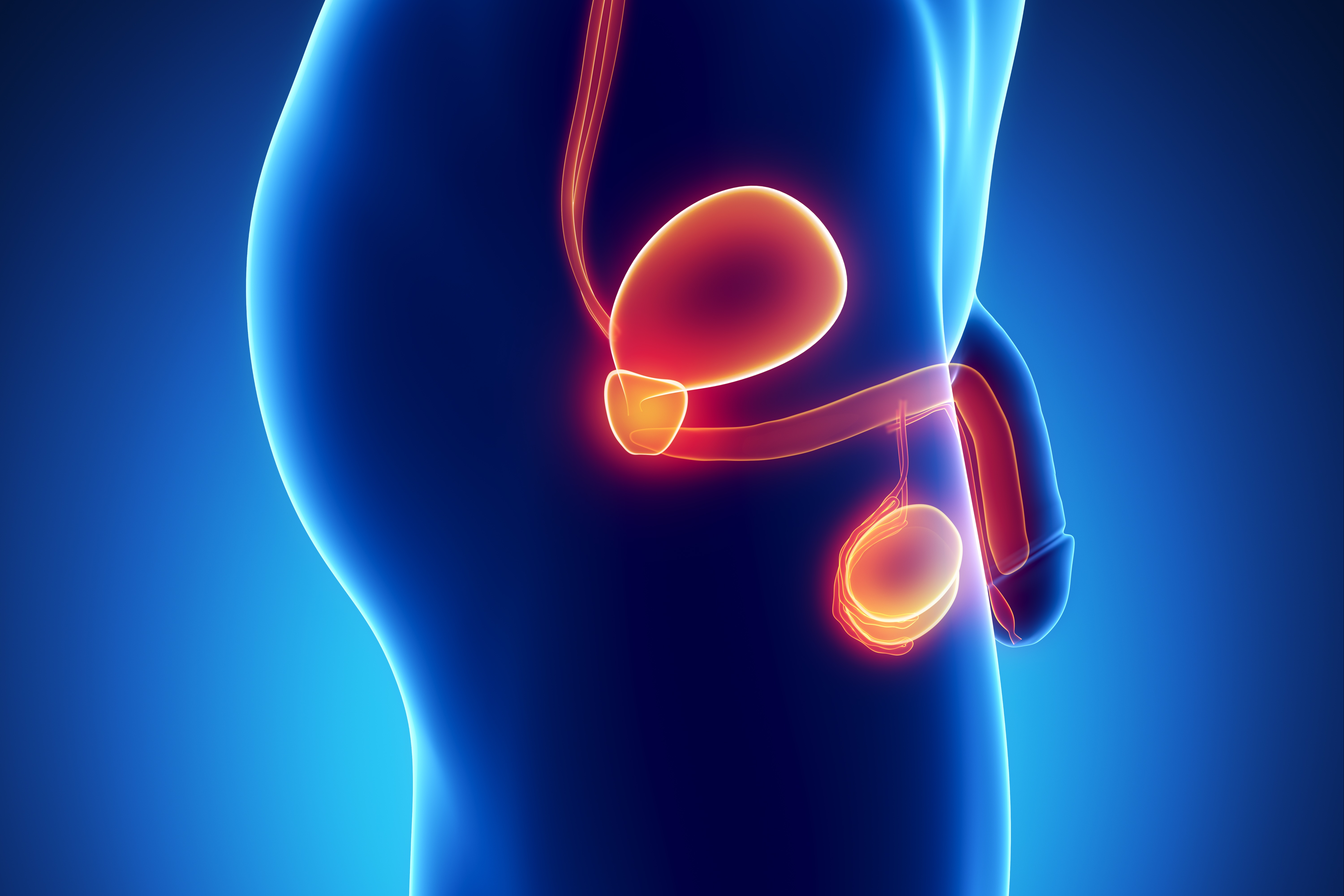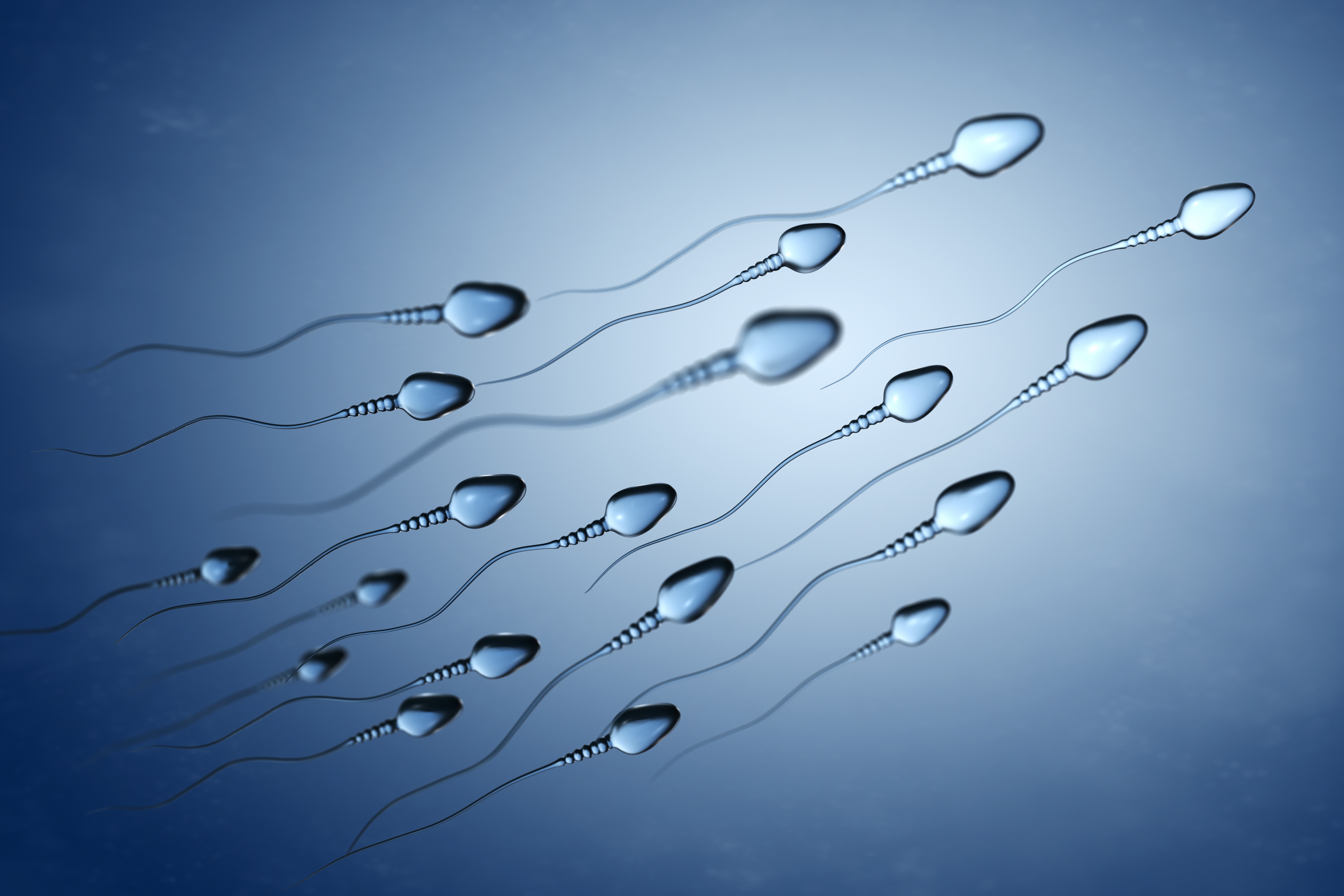
Prostate cancer
First male cancer
With over 50,000 new cases every year in France, prostate cancer is the first male cancer, causing around 8,000 deaths a year, or almost one death every hour.
For this reason, it is vital that men over 50 and those around them are better informed. In fact, there are effective ways of detecting this cancer at stages when it can still be cured, known as early detection or screening when organized by the public authorities.
Personalized screening
The screening procedure is now personalized, depending on the PSA level and the individual's characteristics (age, family history of cancer, ethnic origin, etc.), but also on the contribution of MRI imaging and new targeted biopsy techniques.
The development of multiparametric MRI has radically changed the situation, making it possible to avoid unnecessary biopsies and improve the initial assessment of cancer severity.
Personalized management also involves identifying risk factors, particularly heredity. It is estimated that hereditary cancers account for 5-10% of all prostate cancers. These tumors usually occur at an earlier age, and are also often more aggressive. Hence the importance of detecting them as early as possible.
Adapted treatments
Treatments have been adapted to the patient and improved in recent years, ranging from active surveillance for less aggressive forms to more radical treatments, such as nuclear medicine.
The knowledge acquired over the last few years has also focused on patients' quality of life, so that they can live better during and after treatment.
Benign prostatic hyperplasia
Sensibilisation au cancer de la prostate
A benign but frequent pathology
Benign prostatic hyperplasia is a very common condition in men over 50. Around 30% of men over 65 complain of symptoms related to this condition.
Benign prostatic hyperplasia is an age-related condition which, although benign, can have a significant impact on patients' quality of life. It is therefore important to raise awareness among men over 50 with urinary symptoms, so as to offer them personalized therapeutic solutions to improve their daily lives while limiting the risk of compilations.

Urination problems that affect patients' quality of life
When the prostate increases in size, it can obstruct the passage of urine and prevent the bladder from emptying properly. The patient then experiences symptoms such as: the sensation of having difficulty emptying the bladder, urgent and frequent urges to urinate both day and night, a decrease in the strength of the stream, a choppy stream or delayed drops... these symptoms can sometimes have a major impact on the patient's quality of life.
Patients are generally concerned about urinary blockage, known as “acute urinary retention”, but fortunately this complication is fairly rare (only 2% at 2 years).
A benign pathology that worries men
The most important thing is to reassure the patient and explain that this pathology is by definition benign, and in no way constitutes a predisposition to cancer. Nevertheless, it is often during a consultation for urinary problems that prostate cancer screening is discussed. Once the diagnosis of benign prostatic hypertrophy has been made, the doctor ensures that there are no complications, and in particular no repercussions on the proper functioning of the kidneys or bladder.
Treating while preserving patients' sexuality
There are many ways in which patients can find relief: sometimes it's simply a matter of applying hygienic and dietary advice, such as distributing drinks more evenly throughout the day and limiting coffee, tea and alcohol. Sometimes it's necessary to take medication to “relax” the prostate, reduce inflammation or reduce its size.
When this isn't enough, surgery may be required. The aim is to unblock the prostate so that urine can pass more easily. Today, there are a number of minimally invasive techniques available to relieve the burden on patients, while limiting the risk of complications or after-effects. One of the modern challenges of these treatments is to improve patient comfort without altering their sexuality.

Testicular cancer
Although testicular cancer is rare, with 2,800 cases in 2018, the general public needs to know about it so that it can be better detected.
Testicular cancer affects young patients, mostly between the ages of 18 and 45. If detected early, treatment is limited to one step: removal of the diseased testicle (orchiectomy).
Young subjects, aged between 18 and 45
This is a major operation for a target group that is still developing its adult life, with psychological and physical repercussions and potential anxiety about fertility. However, it is far less onerous than in the case of more advanced diagnoses, where patients will be offered chemotherapy, radiotherapy or even major surgery to remove residual masses (abdominal, cervical or thoracic lymph nodes, removal of a segment of the liver or lung).
The latter treatments may eliminate any possibility of natural fertility.
Overall survival approaching 99%
Cure is the most frequent outcome, with overall survival approaching 99%. However, the impact of these heavy treatments calls for a simple but little-known method for the French population: screening by autopalpation.
Autopalpation, a simple gesture for early detection
The technique is simple to acquire, during a medical consultation and now even via medical videos on the main platforms and networks. As in the case of breast cancer, widespread use of this simple gesture would help to avoid late diagnosis and thus reduce the overall burden of therapeutic after-effects.
Declining male fertility, a worldwide problem
For almost half a century now, numerous reports have pointed to a decline in male fertility, with a decrease in both sperm count and quality. Such a rapid and profound decline (halved in 50 years) on a species scale would, for the most alarmist, lead to fears of extinction.
The environment in the spotlight
To explain such a reduction, the environment is being singled out, in particular molecules with endocrine-disrupting properties, capable of reducing the development of reproductive organs at critical phases of the process. But that's not all... In fact, many factors that are an integral part of our lifestyle also have a proven impact on adult male fertility: obesity, tobacco, cannabis, alcohol, lack of sleep, stress, sedentary lifestyle... Some factors (obesity) are even thought to have a transgenerational effect.

Systematic assessment of the man in the event of infertility in the couple
Today, it is estimated that one couple in 6 is infertile, with the man involved in 50% of cases. There is therefore an urgent need to inform the public and offer systematic treatment of the man. Indeed, most causes of male infertility are amenable to treatment (or corrective action in terms of lifestyle). However, the sine qua non for proposing treatment is to determine the cause. For this reason, the assessment of an infertile man should not be as simple as performing a spermogram, as is often suggested.
Varicocele, a frequent but often overlooked pathology
Among the causes of infertility that are all too often overlooked, varicocele, or testicular varicose vein, is present in 40% of men consulting us for infertility. This condition can be treated by outpatient surgery or interventional radiology. When treated, the man recovers all or part of his fertility (increased sperm concentration and mobility, better sperm DNA quality). It has now been proven that varicocele treatment increases the chances of natural pregnancy, as well as in vitro fertilization.
Medical treatments now available
Medical treatments are also available to stimulate sperm production and improve a man's fertility. These treatments, which act by hormonal means, should not be started without a thorough examination of the man by the specialist, who will determine which treatment is best suited to his dysfunction. If prescribed inappropriately, they can disrupt testicular function.